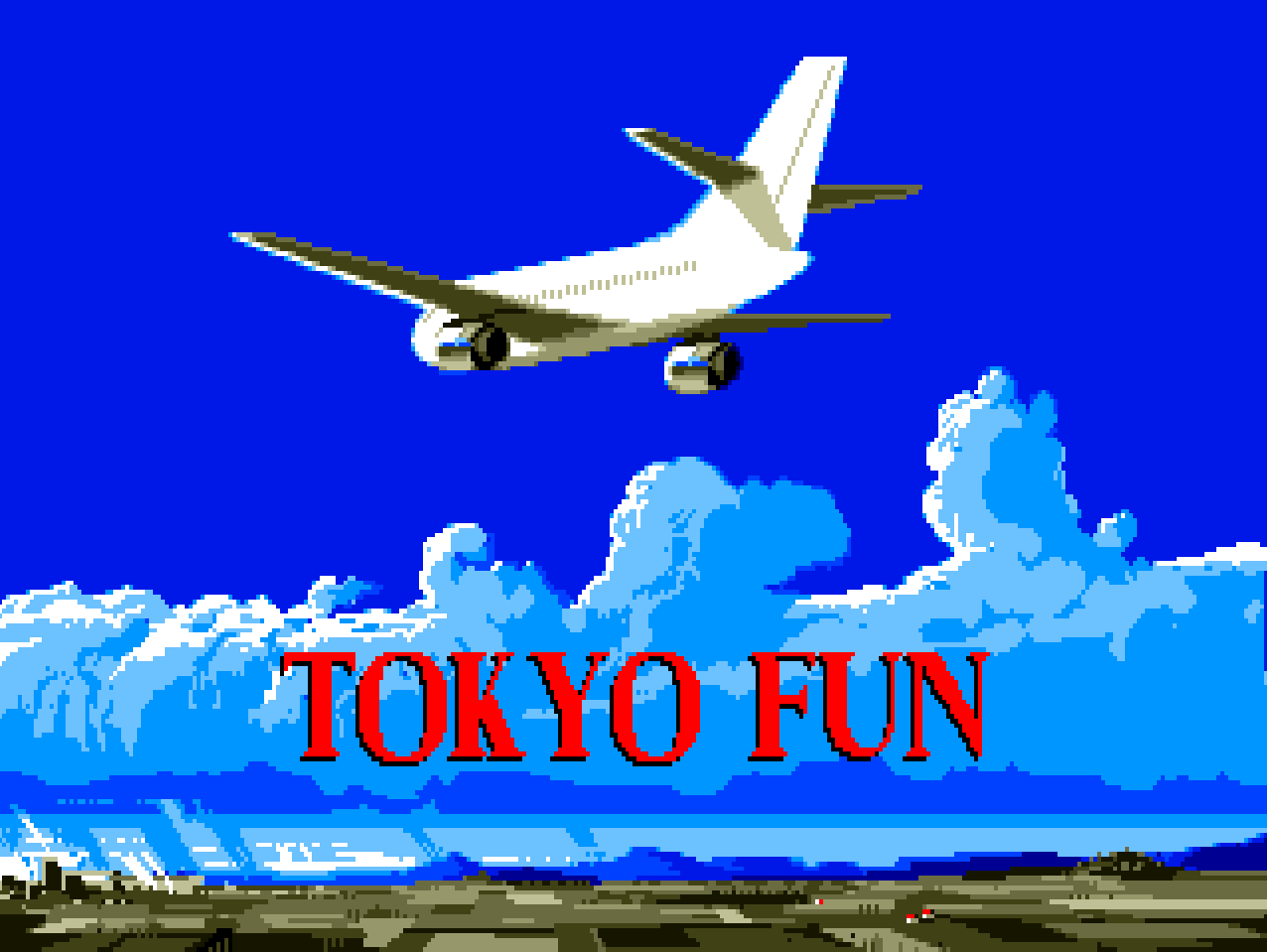The Tennis Court has a rating system as a fun not-at-all-tired gimmick. The ratings, known as Service, are: Ace- The strawberries and creme-de-la-creme. First Serve- Getting your heavy flat serve in play, but it’s getting returned. Very playable, but not tip top. Second Serve- Your 140mph rocket goes straight into the net. You have to rely on your kick second serve. Not bad, but some redeeming qualities if you search. Double Fault- Utterly awful. Unworthy of the court.
Segazoom
Welcome to the virtual Tennis Court! We’re here to explore the Rolodex of the sport of Tennis in the video game world. Today is brought to you by the letter A.
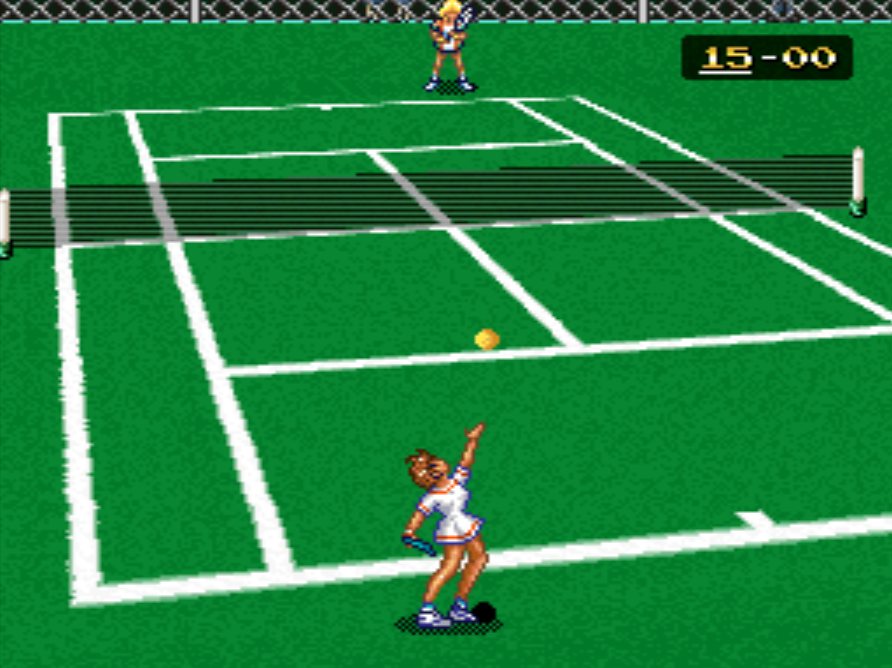
We begin this journey with an A-type subgenre of Anime: Ace o Nerae on the Super Famicom is based on, unsurprisingly, a long-running manga of the same name where Hiromi Oka enthusiastically works to become a professional tennis player while all of the typical stresses of high school pile up. I’m gonna cut the first obvious point off at the pass: yes, this game is M O D E S E V E N, so brace for illusory 3D and an entirely unnecessary amount of camera swooping to a point that might actually prevent those with sensitive motion sickness from playing. With that in mind, how does this play?
Eh, it’s passable. Telenet Japan decided to flex their graphical muscles, here, but almost everything else is neglected as a result. The sound and music are minimal; functional but uninspiring. There’s a scenario mode that loosely follows the manga’s main arcs (there’s an English translation patch for this one if you are not Nihongo jozu) which will keep you occupied for a few hours, but the camera’s skittish nature distorts the depth of field at a constant rate. This makes actually executing the topspin pass and slice crosscourt you wish to unravel your opponents with become quite arduous at times. Fun to be had if you can adjust yourself to the swoops and sways of Ace O Nerae‘s court, though.
Service: Second Serve.
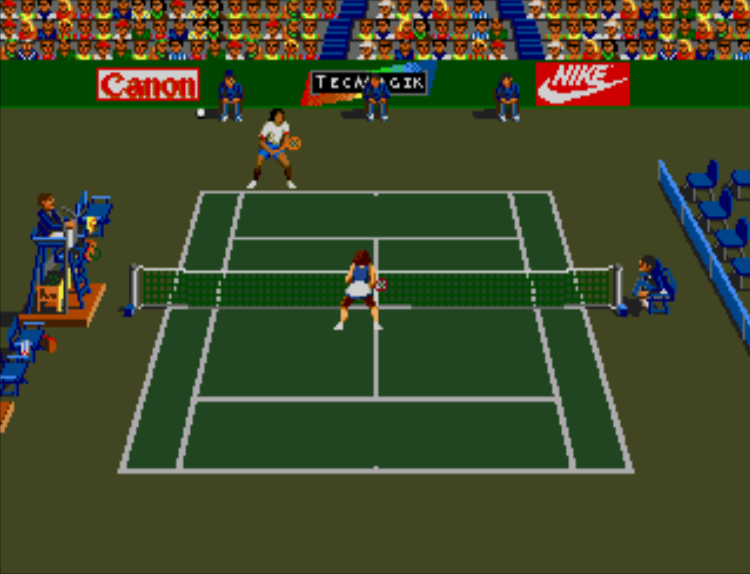
Okay, it’s time you take out your spray bottle of Sampras-repellant; we’re heading to Agassi Town. First up: Andre Agassi Tennis. We’ll be looking at the Mega Drive version, because of course, you know what my name is, I’m gonna favour the Sega versions. Produced by TecMagik – who I’m certain are not in the magic circle – this might be one of the most authentic games of tennis on this list, except in this instance that has negative connotations. The timing and positioning required to execute anything are obscure at best, and you are forced to resort to aiming for the centre of the court as most other shots will go out, and that includes your serves. You can hit smoother strikes by being in position and selecting your shot well in advance so your player (everyone but Agassi is not a real tennis player) can push through a full swing, but 90% of the time you will block the ball into the tramlines. True to life, but does not make for engaging gameplay. For die-hard fans of Big Hair era Agassi only.
Service: Double Fault.
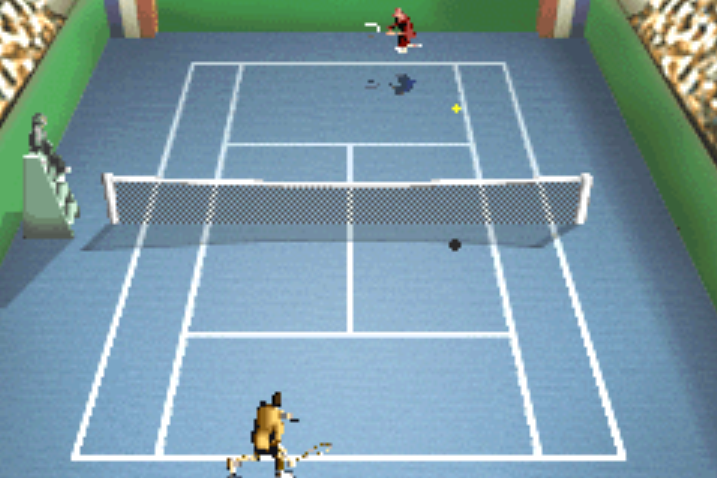
Let’s meet Andre on the smaller screen, now, with Agassi Tennis Generation for the Game Boy Advance. Shot control seems to be cursed under Agassi at this point as again, this is sensitive to a point of forcing you towards certain strategies. Instead of pushing forward, propelling the shot onto the baseline, it heavily trends towards going into the stands. As a result, you’re encouraged to camp way behind the baseline if you want to hit effective groundstrokes. The shoulder buttons will freeze you in place to wind up the stroke. This is necessary to master to afford yourself some additional accuracy. For the issues I’ve just listed, however, this is far more playable than the one above. You can run a tournament, but otherwise, the options are slim and the eponymous Agassi is the only real-world player. Playable, but uninspiring.
Service: Second Serve.
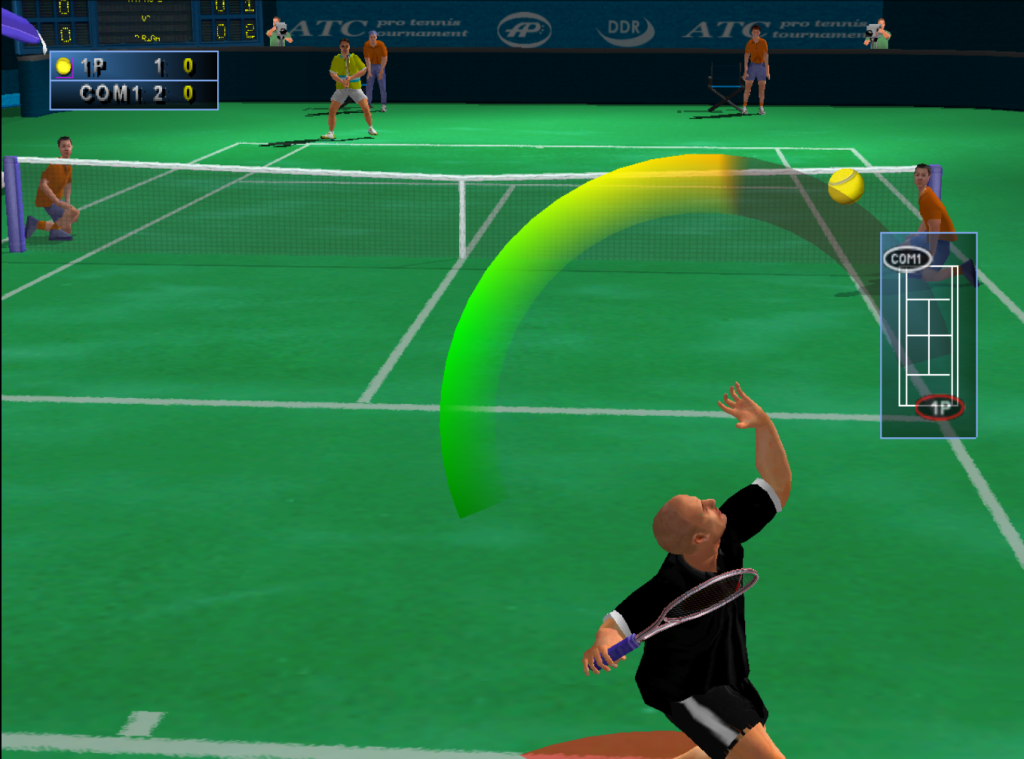
Ok, this hasn’t gone well for you, Andre, but the third time’s the charm, right? Well, about that…
Agassi Tennis Generation 2002 is the third plum symbol on our fruit machine. Usually, 3 of a kind on the reels is good news; here, it spells disaster. This one has almost the opposite problem as its handheld compatriot; due to some archaic physics model, 90% of hits look like drop shots. No matter the power you attempt to produce behind the swing, the ball fizzles into the front of the court after hitting the service box, mysteriously surrounded by thicker gravity than the rest of the court. There’s a tournament mode but it’s basic, especially for a PS2 game. If the gameplay felt mechanically sound and intuitive, this would be fine, but due to the warped physical plane this one appears to take place on, it just doesn’t cut it. Andre Agassi is not a good name to see as the headline endorsement of a tennis game, it would seem.
Service: Second Serve. Just.
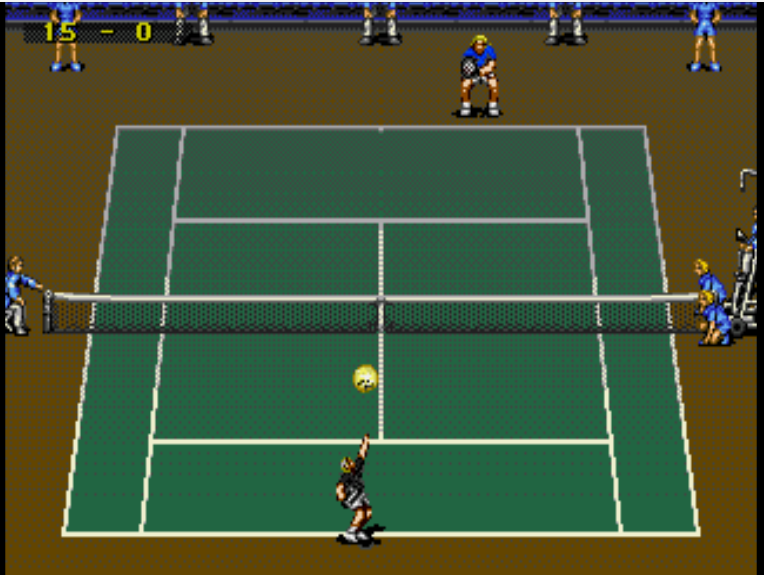
Let’s leave Agassi here, then, and visit a clever selection of Men’s Tennis greats. ATP Tour Championship Tennis, part of the mass-appeal SEGA Sports lineup, pits current players (for 1992, anyway) against the likes of Laver, Rosewall and Ashe. If none of them takes your fancy, create your own player and join the ATP circuit, earning improvements for your protege. So already we’re gaining features on Andre, but it gets even better; this is an accomplished game of tennis.
You essentially have 2 stroke paces to choose from as well as a lob. Movement is fast and locks into shots well, something basically every Agassi game failed at. You can mix up your plays by taking the heat off, attacking the net or simply hitting through your opponent. You only get one shot type per speed, but you can tactically arrange your shots to where you want them (I like Fast Forehand to Flat, Slow Forehand to Topspin, Fast Backhand to Topspin, Slow Backhand to Slice. This arrangement feels most natural to your actual tennis players repertoire). Power and control can be upgraded for serve, backhand and forehand as well as your foot speed. One of the best in the 16-bit space, honestly, and as such highly recommended.
Service: Ace
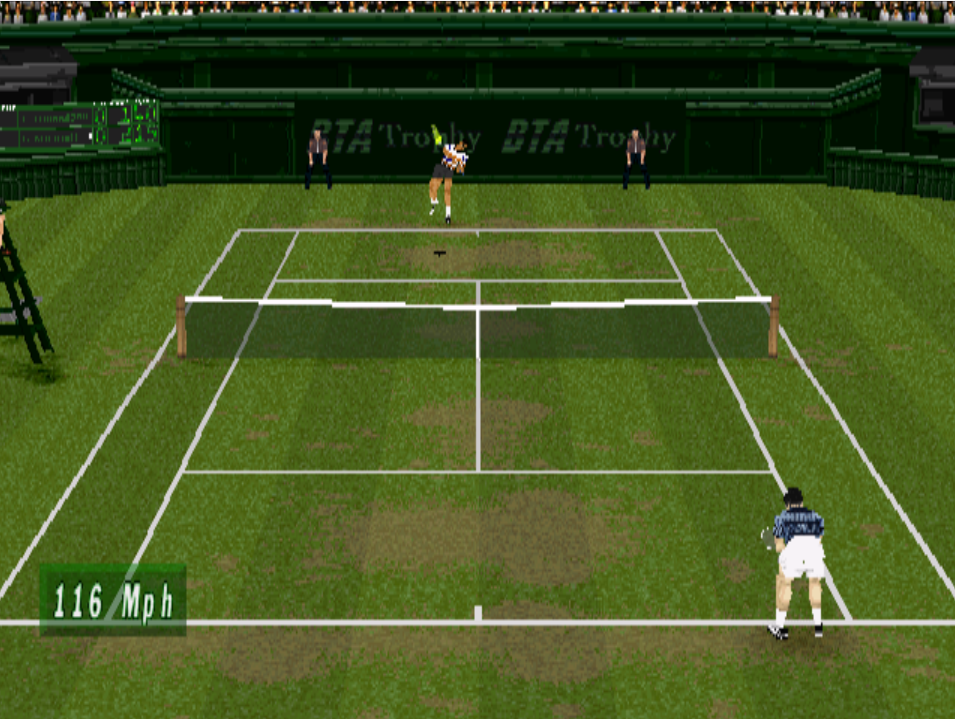
Time to get Euro. Actua Tennis is delivered by Gremlin with a whole cast of tennis pros, but semi-pro gameplay. Everything is pretty standard fare – rudimentary 3D, as was the style at the time; a pretty high-depth roster of real tennis pros (still no female players though); ice rink movement physics; and last but not least, a distinct lack of actual animation of shots. This is not really a major problem, as it is clearly done to avoid compromising gameplay by mapping accurate boxes, but it does require some visual cortex adjustment at first.
Honestly, there’s not much to say on this one. It’s an inoffensive, acceptable take on Tennis, but comes off a little dry and slippery.
Service: Second Serve
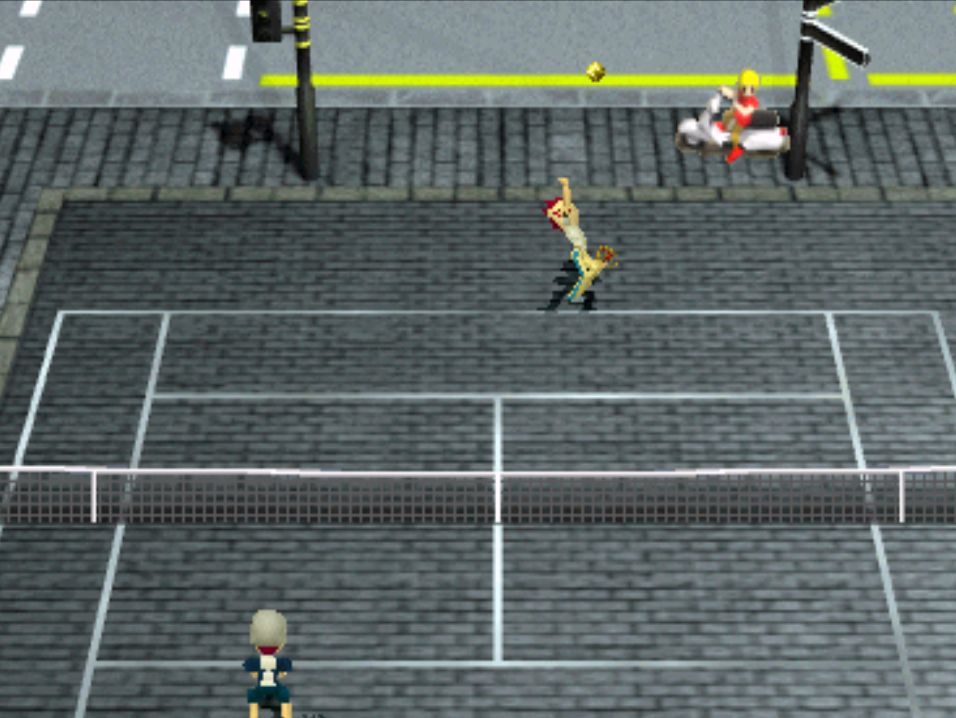
Let us now return to the spurious world of player endorsements, but this time, we have the most famous not-actually-very-good tennis player in the world, Anna Kournikova! More commonly known as Smash Court 2, albeit with some localisation modifications, Anna Kournikova’s Smash Court Tennis takes a more stylised and fantastical approach to character and court, but the tennis itself is purebred.
We’ve got a cast of (other than Anna, fictitious) characters both male and female with a range of playstyles. Looking further, I’m inclined to say this is more of a Smash Court 1.5, as the quest mode from 2 (which we’ll get to in time, don’t worry) is missing. However, you can unlock some Namco characters, like one Heihachi Mishima. There’s a decent set of tournaments to go through for the game, standard exhibitions and a unique smash blast mode which adds hot potato to the mix. The action is fast and fluid, with your standard suite of shots and a power shot, which you have to line up, pull back and release, though that is achieved by the correct timing of a single button press. This is a go-to way to finish a point but you will need to force your opponent off balance to have enough time to plant your feet and let rip. Overall, this plays a rather satisfying game of tennis, it’s just missing some coats of varnish that – spoiler alert – the series would gain as we go forward.
Service: First Serve
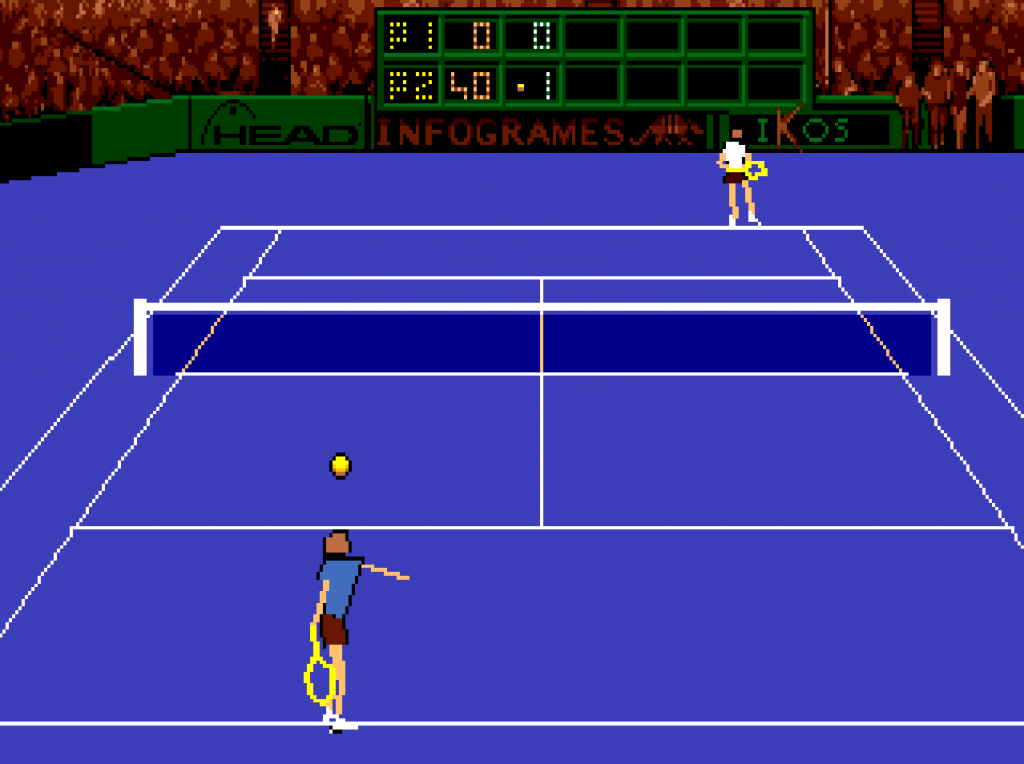
Alright, it’s time to bump up our dankness quota, and head to Amiga and DOS, courtesy of the OTHER big French publisher of the time, Infogrames. Advantage Tennis takes a rather impressionistic stick-men approach for its visuals, has a banger intro tune as per all Amiga games, and otherwise has a slew of options and seasons you can take on with your created player. It seemed to be running a little too fast on my DosBox totally-legitimate-copy, but all of the ingredients do appear to be here. A range of power, good angles and immediacy in gameplay all make for a decent game, but its age and platform suitably both come into sharp focus. If all you had was a computer in the 90s, this is not a bad shout, but otherwise, there’s not much here to tickle the tennis elbow. The computer also appears to be absolutely ruthless, so buckle up.
Service: Second Serve
That about does it for the letter A. There are a few I have either reprioritised to another letter due to one of their localised names or just aren’t worth covering here (fair warning, TV console pong-a-likes will NOT be featured here; I may do a Very Special Episode on them, however). I will see you next time for B(aseline). Or not. Up to you. I’m not your Dad.

